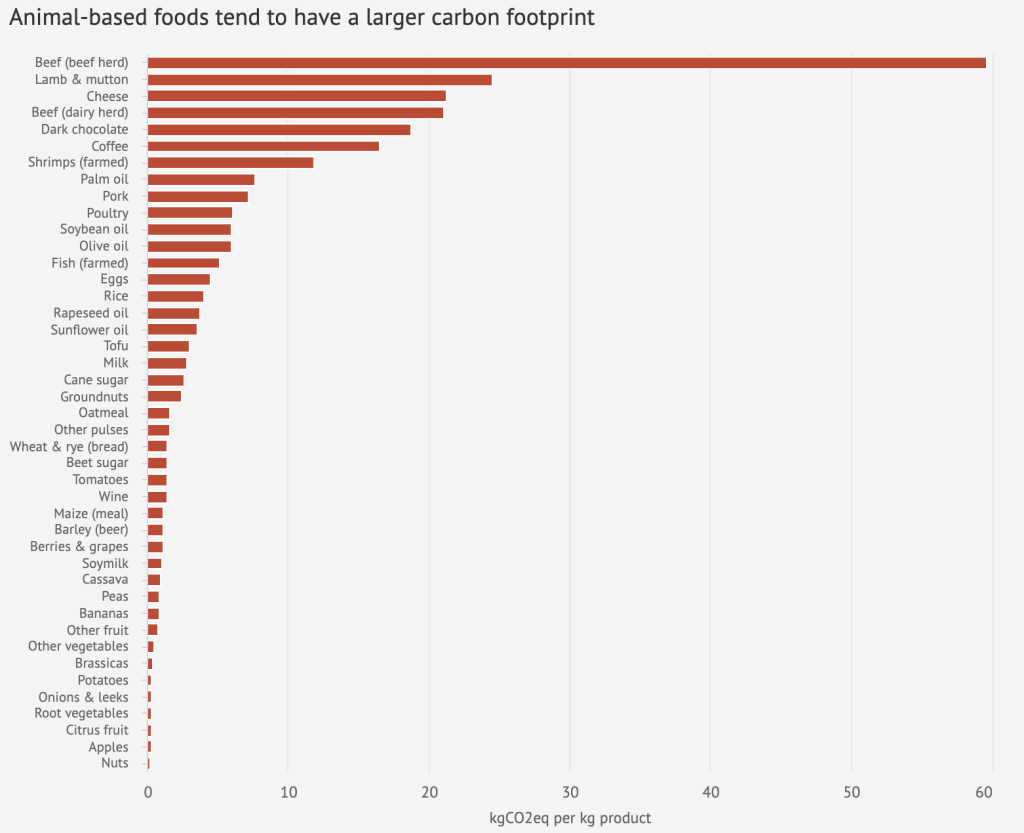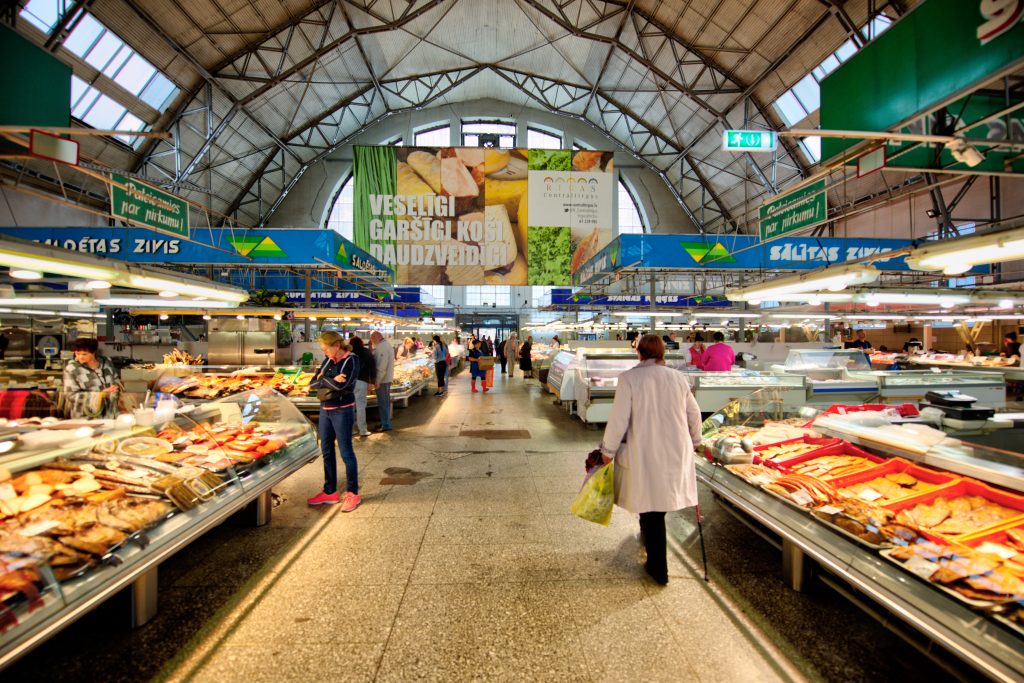Meat and sustainability have a complicated relationship. It raises the question; is producing meat sustainable? Certainly not in its current state. Intensive farming and poor stock management damage the environment and contribute to global warming in a big way.
However, this is not inherent in meat production. For the consumer, knowledge-based smart eating habits can go a long way. On behalf of the producer, selective and wholesale meat farming practices can make production more environmentally friendly.
What’s so bad about eating meat anyway?
Mass-produced meat products are unsustainable for various reasons. Here are some of those reasons:
- Livestock, especially cattle, produce methane (CH4) as part of their digestive process. This process is enteric fermentation. It represents over a quarter of the emissions from the United States Agriculture economic sector.
- Waste and manure from livestock also contribute to greenhouse gas emissions. Differing manure treatment methods affect how much of these gases are created. Manure management accounts for about 12% of the total greenhouse emissions from the United States Agriculture economic sector.
- Crop production needed to make animal feed uses a large amount of resources. Livestock feed production takes up 33% of agricultural land worldwide. This is in addition to human labor and water usage. These resources could be used for other things. Including growing crops for human consumption.
- Agrilculture currently uses an estimated half of the earth’s habitable land. Livestock production uses more than three-quarters of that figure. In the Amazon, the clearing of rain forest to make room for cattle production has become a major issue.
- In comparison, animal products have a higher climate, land, and water footprint than its same quantity of plant-based foods. This is particularly high for cattle. Meats such as chicken and pork do have a smaller footprint than beef. Why? Because they produce less methane. However, they are not grazing animals whose diets consist mostly of grass. Thus, they must compete with humans for plant-based food. This contributes to livestock feed production using 33% of all agricultural land.

Why Switching to Chicken or Fish Is Not the Answer
The average Australian eats 95kgs of meat each year, compared to the world average of 43kgs.
Many environmental concerns concerning meat are predominately directed at beef. About 10 per cent of Australia’s annual greenhouse gas emissions come from the red meat industry, with beef being about two-thirds of this figure.
Beef is grossly overproduced and consumed in Australia, causing massive health costs as well as environmental damage. The root of the problem is the specific, intensive modes of farming. Developments are even being made to reduce methane emissions from cattle. If farming considerations are taken, namely about the amount and location of cattle farming, the industry can continue. All while becoming more sustainable.
Because of beef’s well-known environmental effects, meats such as chicken and fish are sometimes erroneously seen as sustainable. While these species do not contribute to greenhouse gases in the same way cattle do, they bring about their own environmental issues.
Overfishing is becoming a prominent issue. Fishing not done in a sustainable way will disrupt ocean ecosystems. It may result in the endangerment of species and a dwindling supply of fish. If overfishing continues at the current rate, as much as 90% of wild fish will be gone by 2050. Farmed fish has a similarly negative impact on the environment.
Poultry, on the other hand, generally has a less extreme impact on the environment. It is more reliant on electricity to heat and light poultry houses. Because poultry does not eat grass, they are also reliant on feed crops. As mentioned above, feed crops take their own resources and land to produce.
The Value of Wholesale Meat to Humans
Some experts recommend drastically cutting meat consumption to fight climate change. Transitioning to a meat-free or meat-reduced diet is the clearest and most efficient way to do this. However, there are also other things to take into account. The context of meat production will often define how sustainable it is.
Meat produced in some locations is more efficient than elsewhere. Beef production in the United Kingdom is 2-3 times more efficient than elsewhere. This is due to a number of factors. Britain has about 65% of its farmland that is only suitable for growing grass. So, farming these ‘grass converters’ is actually an efficient use of space. Whereas other locations may have to feed crops to their cattle because of a lack of access to grass.
This is particularly showing when compared to other parts of the world. In Australia, where grass does not grow as abundantly, grazing land for livestock is estimated to be over 336 million hectares. This is equivalent to over 40% of the country. Most Australian cattle are fed on grain for 10-15% of their life.
A great way to find out the background of a piece of meat is through a local supplier or butcher. You can find wholesale meat suppliers at farmers markets. Or, you can even find them through the internet. Many farms will sell directly to consumers. Where possible, find a supplier that demonstrates good livestock management practices. Local suppliers can tell you a lot more meat than a packet ever could.
Recent research found that, with this diet change, we could stop diverting crops to feed animals and free up land to make agroecological, nature-friendly farming possible across Europe. This allows for a massive reduction in pesticides and greenhouse gas emissions.
How To Consume Meat More Sustainably
In order to consume meat more sustainably, research is key. These are some key things to consider:
- Location. How far has your meat traveled to get from the farm to you? Food miles are a complicated concept that needs to be viewed on a case-by-case basis. However, most of the time, local produce is more sustainable than produce shipped for long distances.
- To ensure the use of the whole animal, consider less popular cuts. For example, the brisket, silverside, or chuck steak.
- Make sure your meat supplier does not overstock products. This leads to waste.
- Consider native meats. Hunting native game can be controversial, but improves sustainability. Kangaroo is a lower-impact meat that hasn’t yet found its place in the Australian diet as many are hesitant to eat it. Because Kangaroos are indigenous to Australia, they have evolved to survive on native plants. Thus, there is no need to grow crops for them. More to the point, kangaroos are culled – meaning they are selectively hunted to ease grazing pressure. Because they are not farmed, a lot of the environmental impacts of farming infrastructure is completely removed from their meat. Yes, some consider using these animals for meat is cruel, but that is an issue inherent with all meat. Another example of this is capybara meat in South America. Capybaras thrive in their native environment. This means there is no need to clear land to produce feed and space for them.

Source: Unsplash.
What About Methane Reduction Tablets?
Methane is the by-product of livestock digesting grass. It heats the planet 25 times faster than carbon dioxide. This is one of the largest environmental impacts of meat production. It is especially prevalent in cattle and sheep. But reducing meat intake is not the only way we can reduce this.
The CSIRO is developing a seaweed feed product known as ‘Futurefeed’ which greatly reduces the amount of greenhouse gasses that cattle produce. In 2020, FutureFeed received the Food Planet Prize for its benefits to the climate and environment. It also won a $1 million international prize for its work reshaping the food system. FutureFeed said it would use its Food Planet Prize winnings to create an international commercial fund to help First Nations communities generate income from cultivating and selling the seaweed.
Future Feed director and CSIRO scientist Michael Battaglia said that when added to cattle feed, the product, which contains Australian ‘super seaweed’ Asparagopsis, virtually eliminated methane from the animals’ bodily emissions.
According to the CSIRO, ‘If just 10% of global ruminant producers adopted FutureFeed as an ingredient to feed their livestock, it would have the same impact for our climate as removing 100 million cars from the world’s roads, and potential increases in livestock productivity could create enough food to feed an additional 23 million people.’
Conclusion
Sustainable meat production is a multi-faceted topic. Though reducing one’s meat intake is helpful, we must do more. Livestock farming is a major contributor to environmental problems. But simply assuming that all meat consumption is unsustainable is not factual. Smart farming practices and technological developments are constantly changing the food production industry. Knowledge is the most important tool for responsible consumption, and there is much more to find at the THRIVE Project.























